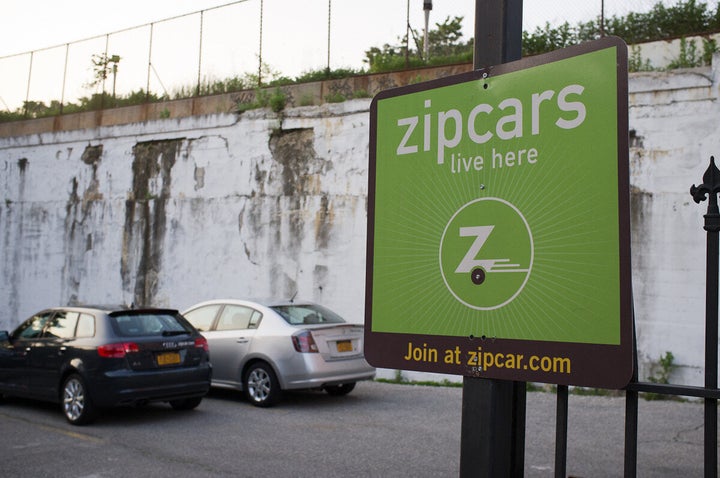
Some New York City businesses are thriving in the wake of a post-hurricane crisis that has crippled the city's subways and left drivers idling in nightmarish '70s-flashback gas lines.
Zipcar rentals have been flying out of the company's lots in New York in recent days, thanks to a company policy that allows customers to rent vehicles with full tanks but return them with only a little gas left. The company allows customers to pay an annual fee for the ability to rent a car from an hourly to daily basis, with insurance and gas included.
Rentals spiked on Thursday and Friday, said Dan Curtin, Zipcar's vice president of operations and service quality.
But what about that gas tank policy? Customers in New York fretted that at some point, Zipcar would not be able to find gas -- adding the company to the ranks of the the thousands of other New Yorkers waiting as gas shortages gripped the metro area.
Not to worry, said Curtin. "We have guys out 24 hours a day now trying to address the situation with cars that are low on fuel," he said. The service also has an inside line with vendors and tries to time visits to the pump in order to optimize when cars fill up on gas, he added.
"The good news is the vast majority of our fleet is fuel efficient, and we're able to go much longer [without refilling] than an Escalade," Curtain said.
So far, Zipcar hasn't had to turn any members away due to its cars not having enough gas, Curtain said. "It looks like we'll be okay through the weekend."
For a commuting alternative completely free of dependence on public transportation and gas, many New Yorkers have also turned to bicycles in Sandy's aftermath. Toga Bikes, located on Manhattan's Upper West Side, has seen its business and foot traffic double since the hurricane, according to manager Eddie Meek.
"More significant than sales is the increase in people getting their old bikes up and running," Meek said. "I think right now people are just doing whatever they can to get around, but this will help people to realize that the transportation system we have in place is flawed, and they need something they can rely on all the time."
According to the New York City Department of Transportation, commuter bike riding nearly quadrupled in the last decade, growing 8 percent in 2011 alone.
Carlos Carbonell, who works at LIC Bicycles in Queens, said that the store has been constantly busy since reopening after a two-day closure due to the hurricane. In addition to people "pulling their old bicycles out of the closet" for repair at the shop, the store has sold many bikes since Hurricane Sandy, he said.
"Anything from $300 to $700 totally walked out the door," Carbonell said.
Tony Scarselli, the owner of Atlantic Bicycles in Brooklyn Heights, said business is up about 25 percent at his shop since the storm. But most people are just "getting their bikes out of their basements and getting them fixed," he said.
Meek, who mostly rides his bike to work anyway, now has no other option to get to work in Manhattan from his home in Bedford-Stuyvesant in Brooklyn, he said. On his 45-minute bike commute, he said he has seen not only fewer cars, but a lot more cyclists riding over the Williamsburg Bridge.
"I can tell a lot of those people don't usually commute, because they're not sitting right or their tires aren't inflated," he said. "It's a very diverse mix of people, some in suits, young and old. It's definitely a wider range of people than I usually see on the bridge."